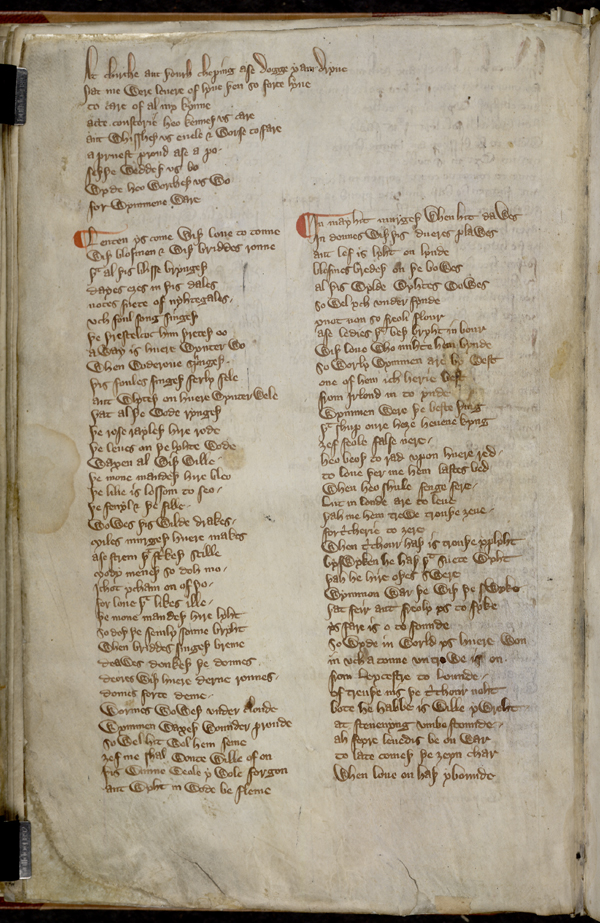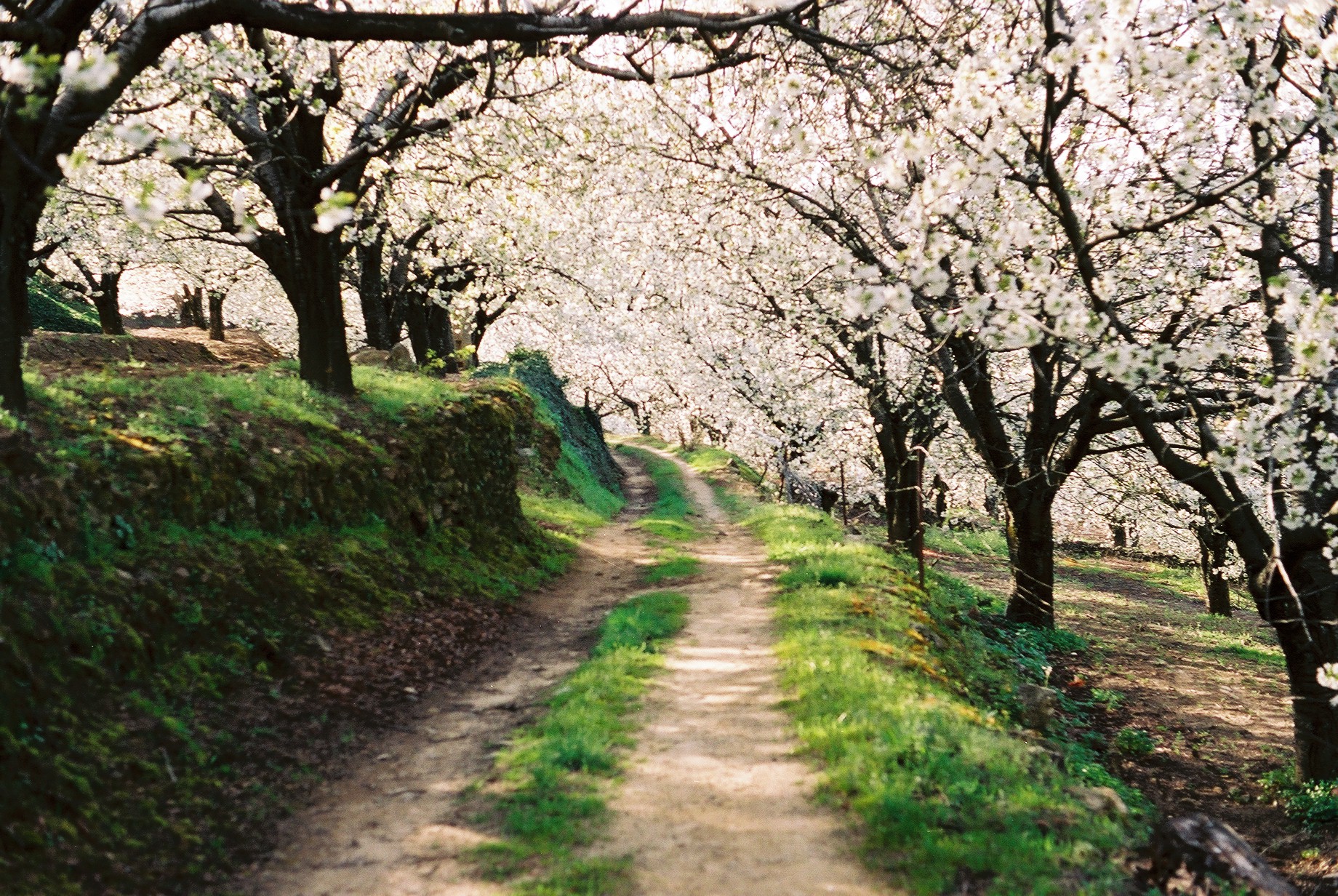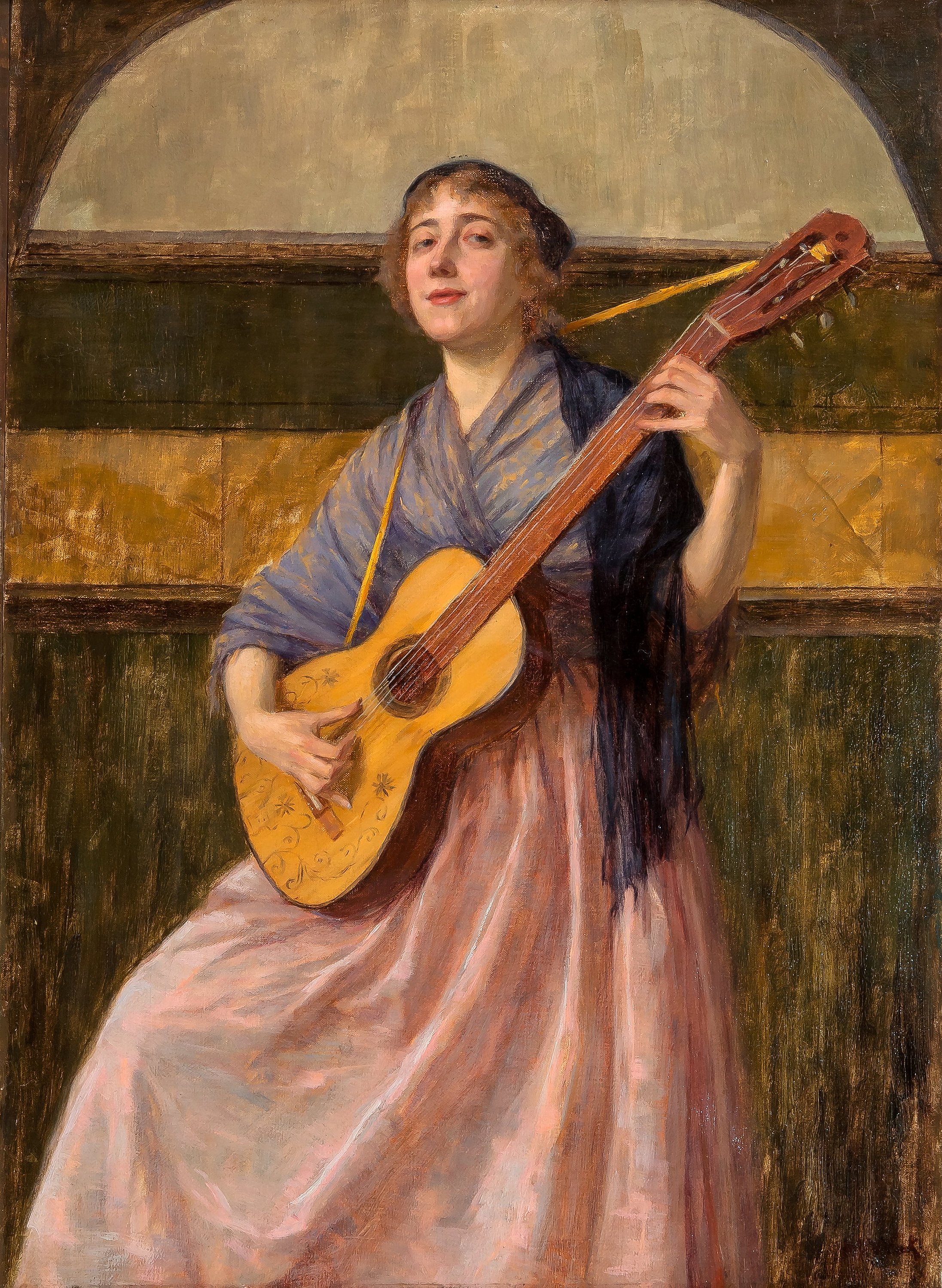|
Reverdie
The reverdie is an old French poetic genre, which celebrates the arrival of spring. Literally, it means "re-greening". Often the poet will encounter Spring, symbolized by a beautiful woman. Originating in the troubadour ballads of the early Middle Ages, reverdies were very popular during the time of Chaucer. English examples from that era include '' Sumer is icumen in'' and '' Lenten ys come with love to toune''. T. S. Eliot's ''The Waste Land'' and William Carlos Williams' '' Spring and All'' are both considered to be modern examples of the genre. The reverdie forms the basis of the Irish aisling, in which the speaker meets Ireland lamenting her woes. References Harmon, William. ''A Handbook to Literature''. Upper Saddle River: Prentice Hall Prentice Hall was an American major educational publisher owned by Savvas Learning Company. Prentice Hall publishes print and digital content for the 6–12 and higher-education market, and distributes its technical titles through ... [...More Info...] [...Related Items...] OR: [Wikipedia] [Google] [Baidu] |
Lenten Ys Come With Love To Toune
"Lenten ys come with love to toune", also known as "Spring", is an anonymous late-13th or early-14th century Middle English lyric poem which describes the burgeoning of nature as spring arrives, and contrasts it with the sexual frustration of the poet. It forms part of the collection known as the Harley Lyrics. Possibly the most famous of the Middle English lyrics, it has been called one of the best lyrics in the language, and "a lover's description of spring, richer and more fragrant in detail than any other of its period." No original music for this poem survives, but it has been set to music by Benjamin Britten, Alan Rawsthorne and others. It was included in ''The Oxford Book of English Verse''. Summary The poet begins by presenting a picture of awakening nature as springtime (''lenten'') arrives. He mentions the various burgeoning flowers and herbs to be seen: daisy, woodruff, rose, lily, fennel and chervil. The nightingales, song thrushes and wild drakes call, t ... [...More Info...] [...Related Items...] OR: [Wikipedia] [Google] [Baidu] |
Aisling
The aisling (, , approximately ), or vision poem, is a poetic genre that developed during the late 17th and 18th centuries in Irish language poetry. The word may have a number of variations in pronunciation, but the ''is'' of the first syllable is always realised as a ("sh") sound. The aisling also features in traditional sean-nós songs. History of the form In the aisling, Ireland appears to the poet in a vision in the form of a woman from the Otherworld: sometimes young and beautiful, other times old and haggard. This female figure is generally referred to in the poems as a '' spéirbhean'' (, 'heavenly woman'). She laments the current state of the Irish people and predicts an imminent revival of their fortunes, usually linked to the restoration of the Roman Catholic House of Stuart to the thrones of Great Britain and Ireland. The form developed out of an earlier, non-political genre akin to the French ''reverdie'', in which the poet meets a beautiful, supernatural wom ... [...More Info...] [...Related Items...] OR: [Wikipedia] [Google] [Baidu] |
France
France (), officially the French Republic ( ), is a country primarily located in Western Europe. It also comprises of overseas regions and territories in the Americas and the Atlantic, Pacific and Indian Oceans. Its metropolitan area extends from the Rhine to the Atlantic Ocean and from the Mediterranean Sea to the English Channel and the North Sea; overseas territories include French Guiana in South America, Saint Pierre and Miquelon in the North Atlantic, the French West Indies, and many islands in Oceania and the Indian Ocean. Due to its several coastal territories, France has the largest exclusive economic zone in the world. France borders Belgium, Luxembourg, Germany, Switzerland, Monaco, Italy, Andorra, and Spain in continental Europe, as well as the Netherlands, Suriname, and Brazil in the Americas via its overseas territories in French Guiana and Saint Martin. Its eighteen integral regions (five of which are overseas) span a combined area of ... [...More Info...] [...Related Items...] OR: [Wikipedia] [Google] [Baidu] |
Spring (season)
Spring, also known as springtime, is one of the four temperate In geography, the temperate climates of Earth occur in the middle latitudes (23.5° to 66.5° N/S of Equator), which span between the tropics and the polar regions of Earth. These zones generally have wider temperature ranges throughout t ... seasons, succeeding winter and preceding summer. There are various technical definitions of spring, but local usage of the term varies according to local climate, cultures and customs. When it is spring in the Northern Hemisphere, it is autumn in the Southern Hemisphere and vice versa. At the spring (or vernal) equinox, Daytime (astronomy), days and nights are approximately twelve hours long, with daytime length increasing and nighttime length decreasing as the season progresses until the Summer Solstice in June (Northern Hemisphere) and December (Southern Hemisphere). Spring and "springtime" refer to the season, and also to ideas of rebirth, rejuvenation, renewal, ... [...More Info...] [...Related Items...] OR: [Wikipedia] [Google] [Baidu] |
Poet
A poet is a person who studies and creates poetry. Poets may describe themselves as such or be described as such by others. A poet may simply be the creator ( thinker, songwriter, writer, or author) who creates (composes) poems ( oral or written), or they may also perform their art to an audience. The work of a poet is essentially one of communication, expressing ideas either in a literal sense (such as communicating about a specific event or place) or metaphorically. Poets have existed since prehistory, in nearly all languages, and have produced works that vary greatly in different cultures and periods. Throughout each civilization and language, poets have used various styles that have changed over time, resulting in countless poets as diverse as the literature that (since the advent of writing systems) they have produced. History In Ancient Rome, professional poets were generally sponsored by patrons, wealthy supporters including nobility and military officials. F ... [...More Info...] [...Related Items...] OR: [Wikipedia] [Google] [Baidu] |
Troubadour
A troubadour (, ; oc, trobador ) was a composer and performer of Old Occitan lyric poetry during the High Middle Ages (1100–1350). Since the word ''troubadour'' is etymologically masculine, a female troubadour is usually called a '' trobairitz''. The troubadour school or tradition began in the late 11th century in Occitania, but it subsequently spread to the Italian and Iberian Peninsulas. Under the influence of the troubadours, related movements sprang up throughout Europe: the Minnesang in Germany, '' trovadorismo'' in Galicia and Portugal, and that of the trouvères in northern France. Dante Alighieri in his '' De vulgari eloquentia'' defined the troubadour lyric as ''fictio rethorica musicaque poita'': rhetorical, musical, and poetical fiction. After the "classical" period around the turn of the 13th century and a mid-century resurgence, the art of the troubadours declined in the 14th century and around the time of the Black Death (1348) it died out. The texts of ... [...More Info...] [...Related Items...] OR: [Wikipedia] [Google] [Baidu] |
Ballads
A ballad is a form of verse, often a narrative set to music. Ballads derive from the medieval French ''chanson balladée'' or '' ballade'', which were originally "dance songs". Ballads were particularly characteristic of the popular poetry and song of Britain and Ireland from the Late Middle Ages until the 19th century. They were widely used across Europe, and later in Australia, North Africa, North America and South America. Ballads are often 13 lines with an ABABBCBC form, consisting of couplets (two lines) of rhymed verse, each of 14 syllables. Another common form is ABAB or ABCB repeated, in alternating eight and six syllable lines. Many ballads were written and sold as single sheet broadsides. The form was often used by poets and composers from the 18th century onwards to produce lyrical ballads. In the later 19th century, the term took on the meaning of a slow form of popular love song and is often used for any love song, particularly the sentimental ballad of pop or r ... [...More Info...] [...Related Items...] OR: [Wikipedia] [Google] [Baidu] |
Middle Ages
In the history of Europe, the Middle Ages or medieval period lasted approximately from the late 5th to the late 15th centuries, similar to the post-classical period of global history. It began with the fall of the Western Roman Empire and transitioned into the Renaissance and the Age of Discovery. The Middle Ages is the middle period of the three traditional divisions of Western history: classical antiquity, the medieval period, and the modern period. The medieval period is itself subdivided into the Early Early may refer to: History * The beginning or oldest part of a defined historical period, as opposed to middle or late periods, e.g.: ** Early Christianity ** Early modern Europe Places in the United States * Early, Iowa * Early, Texas * Early ..., High Middle Ages, High, and Late Middle Ages. Population decline, counterurbanisation, the collapse of centralized authority, invasions, and mass migrations of tribes, which had begun in late antiquity, continued i ... [...More Info...] [...Related Items...] OR: [Wikipedia] [Google] [Baidu] |
Chaucer
Geoffrey Chaucer (; – 25 October 1400) was an English poet, author, and civil servant best known for '' The Canterbury Tales''. He has been called the "father of English literature", or, alternatively, the "father of English poetry". He was the first writer to be buried in what has since come to be called Poets' Corner, in Westminster Abbey. Chaucer also gained fame as a philosopher and astronomer, composing the scientific '' A Treatise on the Astrolabe'' for his 10-year-old son Lewis. He maintained a career in the civil service as a bureaucrat, courtier, diplomat, and member of parliament. Among Chaucer's many other works are ''The Book of the Duchess'', '' The House of Fame'', '' The Legend of Good Women'', and ''Troilus and Criseyde''. He is seen as crucial in legitimising the literary use of Middle English when the dominant literary languages in England were still Anglo-Norman French and Latin. Chaucer's contemporary Thomas Hoccleve hailed him as "the firste fynder ... [...More Info...] [...Related Items...] OR: [Wikipedia] [Google] [Baidu] |
English Language
English is a West Germanic language of the Indo-European language family, with its earliest forms spoken by the inhabitants of early medieval England. It is named after the Angles, one of the ancient Germanic peoples that migrated to the island of Great Britain. Existing on a dialect continuum with Scots, and then closest related to the Low Saxon and Frisian languages, English is genealogically West Germanic. However, its vocabulary is also distinctively influenced by dialects of France (about 29% of Modern English words) and Latin (also about 29%), plus some grammar and a small amount of core vocabulary influenced by Old Norse (a North Germanic language). Speakers of English are called Anglophones. The earliest forms of English, collectively known as Old English, evolved from a group of West Germanic ( Ingvaeonic) dialects brought to Great Britain by Anglo-Saxon settlers in the 5th century and further mutated by Norse-speaking Viking settlers starting in ... [...More Info...] [...Related Items...] OR: [Wikipedia] [Google] [Baidu] |
The Waste Land
''The Waste Land'' is a poem by T. S. Eliot, widely regarded as one of the most important poems of the 20th century and a central work of Modernist poetry in English, modernist poetry. Published in 1922, the 434-line poem first appeared in the United Kingdom in the October issue of Eliot's ''The Criterion'' and in the United States in the November issue of ''The Dial''. It was published in book form in December 1922. Among its famous phrases are "April is the cruellest month", "I will show you fear in a handful of dust", and the Sanskrit mantra "Shanti Mantras, Shantih shantih shantih". Eliot's poem combines the legend of the Holy Grail and the Fisher King with vignettes of contemporary British society. Eliot employs many literary and cultural allusions from the Western canon such as Ovid's Metamorphoses and Dante Alighieri, Dante's ''Divine Comedy'', as well as Shakespeare, Buddhism, and the Hinduism, Hindu Upanishads. The poem shifts between voices of satire and prophecy feat ... [...More Info...] [...Related Items...] OR: [Wikipedia] [Google] [Baidu] |



.jpg)

